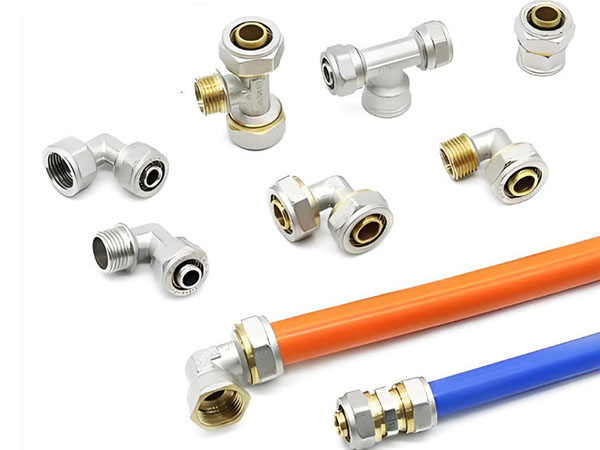In the home decoration and construction sector in 2025, PEX pipes (cross-linked polyethylene pipes) have become a popular choice for household water supply systems worldwide. Whether in the United States, Canada or the Southeast Asian market, PEX pipe fittings are gradually replacing traditional copper pipes and galvanized steel pipes due to their advantages of easy installation, corrosion resistance and high-temperature resistance. This guide will detail How to Install PEX Pipe Fittings to help you quickly understand the connection steps and key points of household piping systems.

What are PEX pipes and PEX pipe fittings
PEX pipes are flexible plastic pipes made of cross-linked polyethylene materials, featuring excellent heat resistance and corrosion resistance. It is often used in cold and hot water pipes, floor heating systems and residential water supply networks. According to different manufacturing methods, PEX pipes are mainly divided into three types: PEX-A, PEX-B and PEX-C. Among them, PEX-A has the best flexibility and is suitable for using expansion connection methods.
Common PEX pipe fittings include:
Elbow
Tee
Coupling
Valve
These pipe fittings are generally made of brass, plastic alloy or stainless steel, and have good sealing performance and pressure resistance.
Pre-installation Preparation and Required Tools
Before installing PEX pipe fittings, the following materials and tools are required:
PEX pipes of different sizes (red for hot water, blue for cold water)
Corresponding PEX fittings and connectors
Dedicated PEX pipe cutter
Crimping pliers or clamping tools
Go/No-Go gauge
Measurement tape, marker, and leak-proof tape
When used in the United States or Canada, it is recommended to select PEX pipes and fittings that conform to ASTM F876/F877 standards to ensure safety and durability.

PEX Pipe Fitting Installation Steps
1. Measurement and Cutting
Accurately measure the required length according to the piping design drawing, and cut vertically using a PEX pipe cutter, ensuring a clean, burr-free cut.
2. Inserting the Crimping Ring or Clamping Ring
Slide the crimping ring onto the end of the PEX pipe, ensuring it is approximately 1 cm from the pipe opening for easy crimping.
3. Inserting the PEX Fitting
Fully insert the corresponding PEX fitting (such as a tee or elbow) into the pipe, ensuring sufficient insertion depth and a tight seal.
4. Crimping with Tools
Select crimping pliers or clamping pliers according to the system being used, align the crimping ring, and apply even force until a secure connection is formed.
5. Checking Connection Quality
Use a gauge to check the tightness of the crimping ring. If loosening or misalignment is found, re-crimp.
6. Performing a Water Pressure Test
After installation, conduct a water pressure test to ensure all connection points are leak-free and the pressure remains stable.

Advantages of PEX Pipe Installation
Compared to traditional copper pipes, PEX pipe systems offer the following significant advantages:
Quick Installation: No welding required, connections are completed via crimping;
Lower Cost: Material and labor costs are significantly lower than copper pipes;
Strong Corrosion Resistance: Unaffected by water quality and oxidation;
Excellent Freeze Resistance: Not easily cracked even in low winter temperatures;
High Flexibility: Can be bent for installation, reducing the number of joints.
Therefore, PEX pipes are widely used in residential and commercial building piping systems, especially in markets such as North America, Europe, and Australia.
While the installation process of PEX pipe fittings may seem simple, every step must ensure a secure connection and smooth pipe flow. Selecting qualified PEX pipes and standard fittings, and strictly following the operating procedures for crimping and pressure testing, are crucial for ensuring the long-term stable operation of the system.
By 2025, with the increasing prevalence of home renovations and energy-efficient homes, PEX pipe systems are becoming the preferred solution for residential piping installations worldwide. If you work in the building materials, home improvement, or plumbing industries, mastering the installation methods of PEX pipe fittings will help you remain competitive in the future market.






















